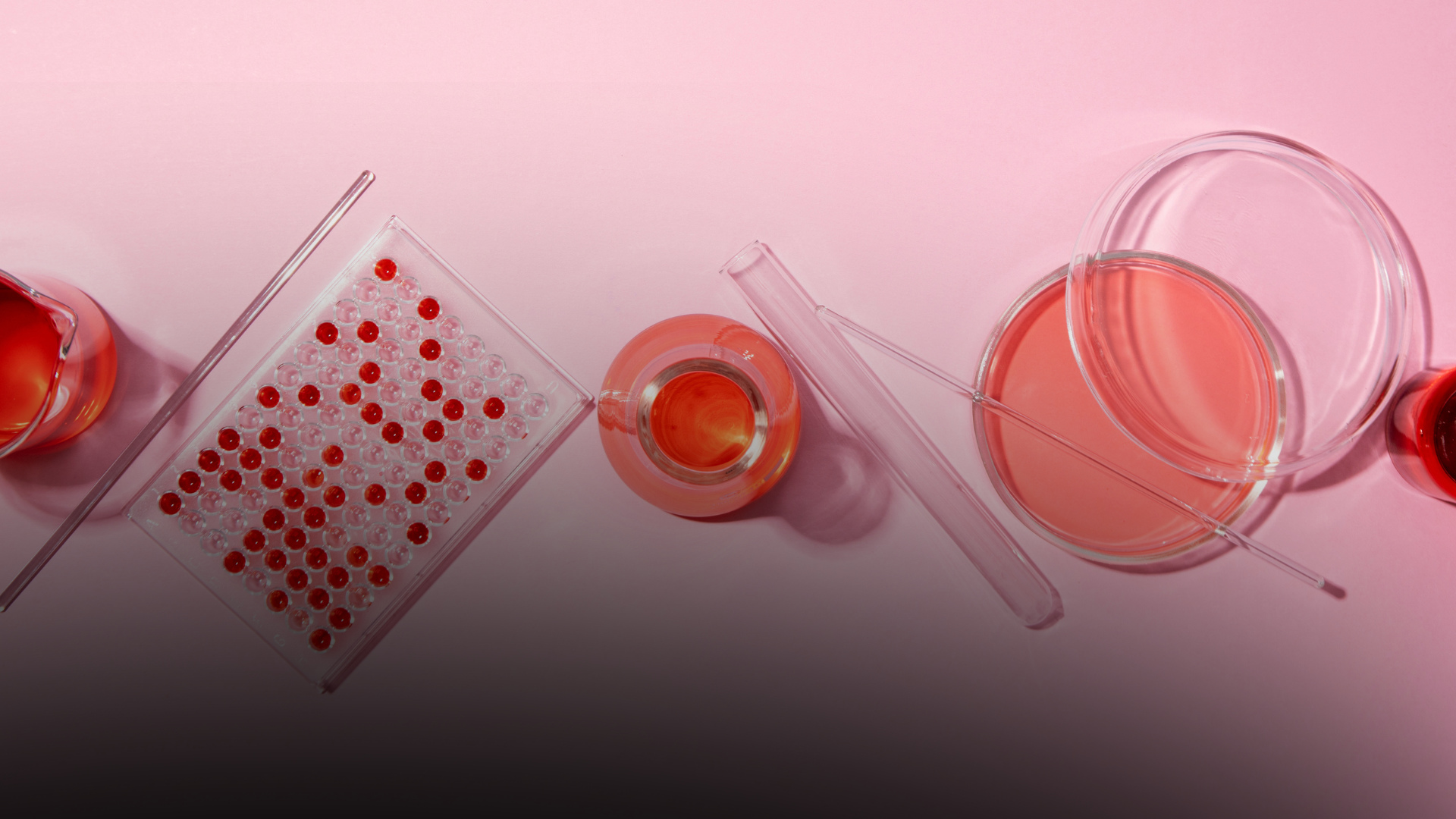A new form of scrutiny has reached the US beauty industry. Court filings in California have begun naming several beauty and personal-care brands, including Mielle Organics, Paula’s Choice, Paul Mitchell, and Dermalogica. The issue is a familiar phrase printed on packaging: Made in USA.
The phrase once operated as a blend of marketing and national sentiment, used to suggest reliability and quality, with a soft data backing that could sometimes stretch the definition of the word “made”. It now functions as a legal commitment that must be supported with evidence. Domestic courts have begun allowing more of these cases to move forward, shifting responsibility onto brands to prove their claims.
In McCoy v. McCormick (a case over French’s mustard), a California federal court held that the state’s “Made in USA” statute is not preempted by the FTC’s Labeling Rule. A claim might satisfy federal “all or virtually all” standards yet still be challenged under California’s stricter test. One ruling effectively multiplied the number of ways a claim can be challenged at the state level.
California’s consumer protection apparatus – via its Unfair Competition Law (UCL), False Advertising Law (FAL), and Consumer Legal Remedies Act (CLRA) – permits individual plaintiffs to bring claims (and often class actions). In practice, a single bottle with a single phrase, can now trigger an inquiry into an entire supply chain. Ingredients, packaging, processing, every component is open to investigation and discover.
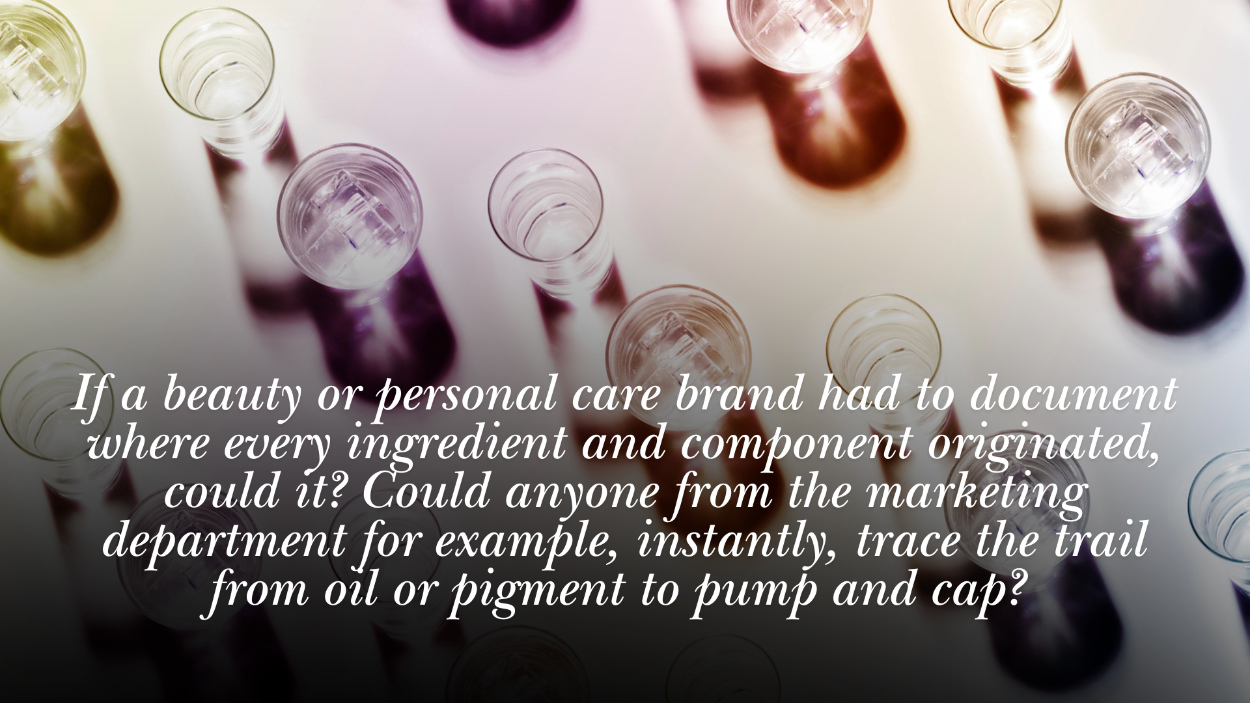
This structure doesn’t necessarily imply deception. More often, it exposes the gap between what a company believes about its products and what it can prove, especially where the extended supply chain is concerned.
Which raises a practical question, if a beauty or personal care brand had to document where every ingredient and component originated, could it? Could anyone from the marketing department for example, instantly, trace the trail from oil or pigment to pump and cap? Probably not without chasing a few suppliers – and certainly not without needing to ask some difficult questions about where packaging and ancillary components are sourced and assembled
The Federal Trade Commission’s rule governing origin claims requires that a product be “all or virtually all” domestically sourced, but “virtually all” is where legal simplicity collapses under commercial reality. Coconut oil doesn’t come from California, nor shea butter from Connecticut. Globalised production has eroded the border between “made” and “assembled,” between what is fabricated and what is finished.
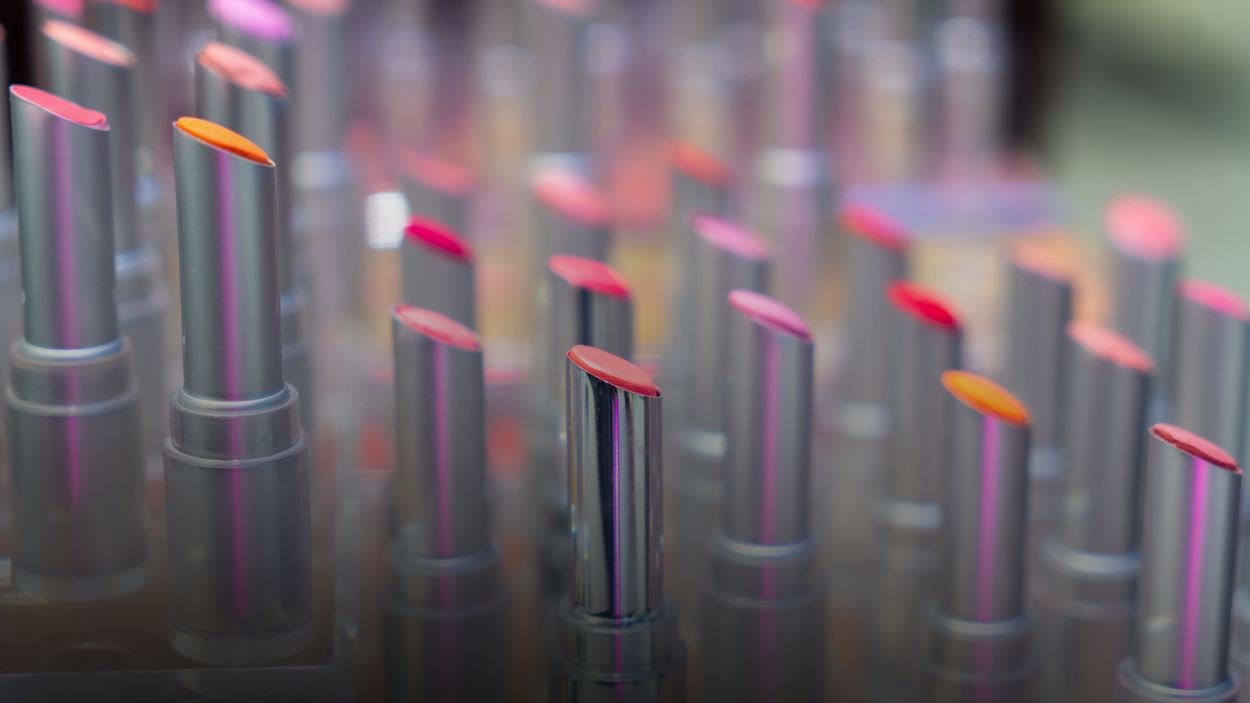
For years, many brands treated final assembly, blending, or packaging in the U.S. as sufficient justification for “Made in USA” claims (indeed the Trump administration tried something similar with its smartphone handset, before substituting “Made with American values in mind…”) even when significant components were sourced abroad. The logic isn’t new. In the 1980s, plenty of British manufacturers used “Assembled in the UK” tags on imported electronics to borrow the aura of domestic craft, and to push back against consumer sentiment that, at that time, was prejudiced against electronics made in Japan and China, without breaking any rules. The label said one thing, the supply chain another, and regulators mostly let it slide for reasons of expediency or national competitiveness.
The balance is changing under growing scrutiny. “Made in USA” no longer sits untested on a label; it’s something regulators and competitors now expect to see backed by evidence.
A formal mechanism for that proof already exists. Under BBB National Programs’ National Advertising Division (NAD), companies can challenge one another’s origin claims. The NAD can request supplier contracts, ingredient lists, and manufacturing records, and then decide whether the evidence meets the FTC’s “virtually all” standard. These reviews don’t often reach court, but they do lead to visible corrections. Oral Essentials changed its label to “Made in USA with U.S. and globally sourced ingredients.” P&G’s Native dropped its “Born in the USA” line after a challenge from SC Johnson.
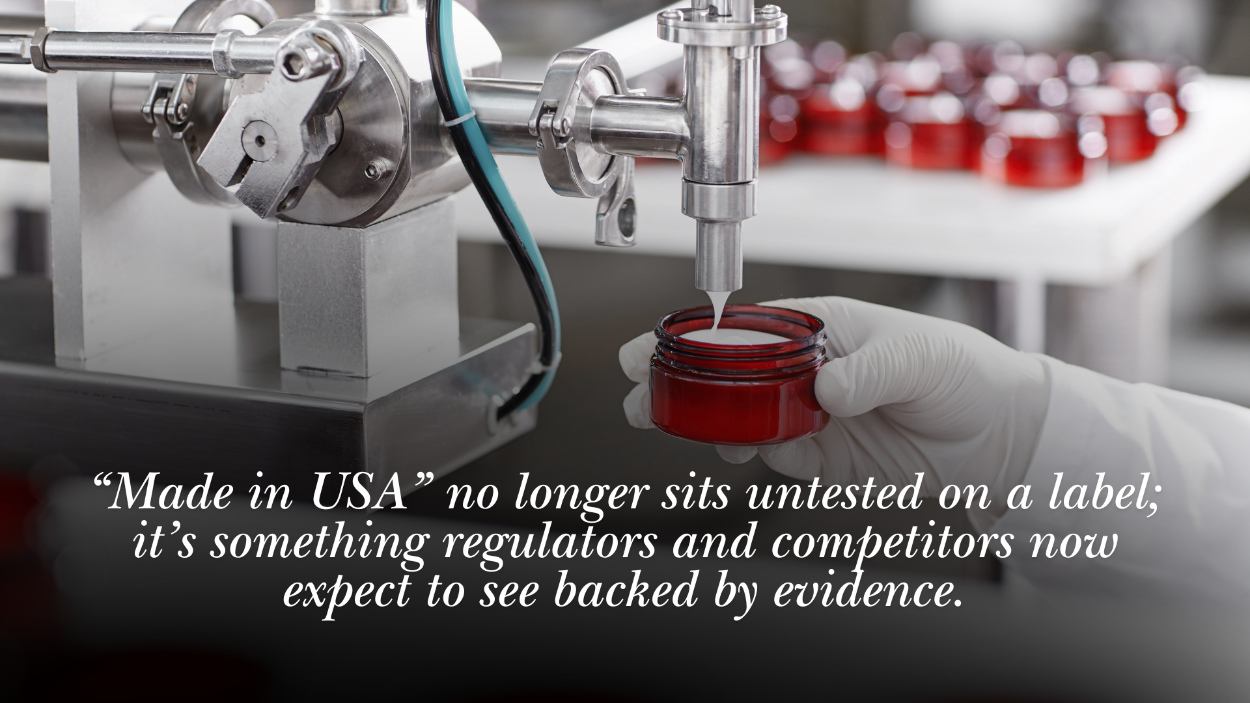
California’s consumer suits follow a different route. They’re usually filed by individuals, often backed by firms that specialise in origin-labelling claims. The process is slower, costlier, and more public, but the core question is the same: if impelled, can the brand substantiate what it implied? Recent filings such as those against Dermalogica and Paul Mitchell show how one disputed phrase can pull an entire supply chain into view.
Tariffs, global supply chains, and consumer expectations have collectively raised the stakes for origin claims in beauty and beyond. Tariffs make domestic production more marketable; global sourcing makes that promise harder to prove; and once trust is damaged, it takes time to recover. Together, these pressures have turned a familiar marketing line into a test of credibility.
The reality is that the information to answer these challenges already exists inside the companies being challenged, whether it provides a positive answer or not. Product lifecycle management and ERP systems store supplier and manufacturing data. Sustainability dashboards trace material provenance for environmental reporting. Procurement software logs certificates, contracts, and shipping routes. Even informal logs will document most of the multi-tier supply chain. The problem isn’t that these things are absent, it’s that they can often live in isolation, and that brands don’t always like the picture that disclosure paints.
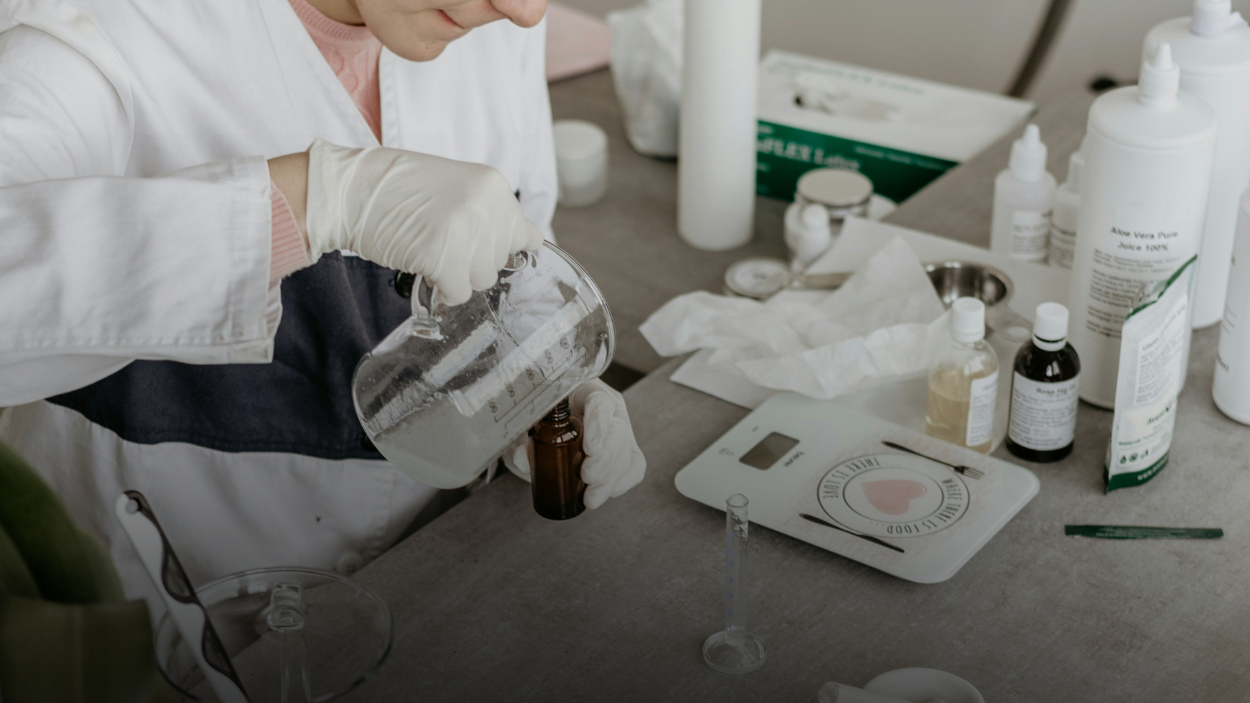
When an origin claim is challenged, information from those systems has to be compared and reconciled. In large organisations, this takes time. Product development may track ingredient sourcing but not packaging. Marketing sees the finished item but not its components. Sustainability teams focus on emissions and waste metrics and rarely intersect with legal or brand-compliance functions. Each group holds accurate data, but none has the complete picture.
Digital product passports, now being piloted under the EU’s Ecodesign for Sustainable Products Regulation (ESPR), are one emerging attempt to close that gap. They create an item-level record of materials, manufacturing steps, and certifications, a kind of living invoice for provenance. Traceability systems built for ESG audits can already log geographic origin as easily as environmental impact.
What’s missing, in other words, is governance and transparency between internal and external stakeholders, the process discipline that connects parallel systems and makes information consistent across teams.
It’s tempting to see these lawsuits as a threat, but they may just be a form of course correction. Beauty’s first digital revolution was driven by acceleration, faster launches, and shorter cycles. The next phase seems more reflective tracing inputs, verifying claims, re-establishing coherence between what’s said and what’s true.
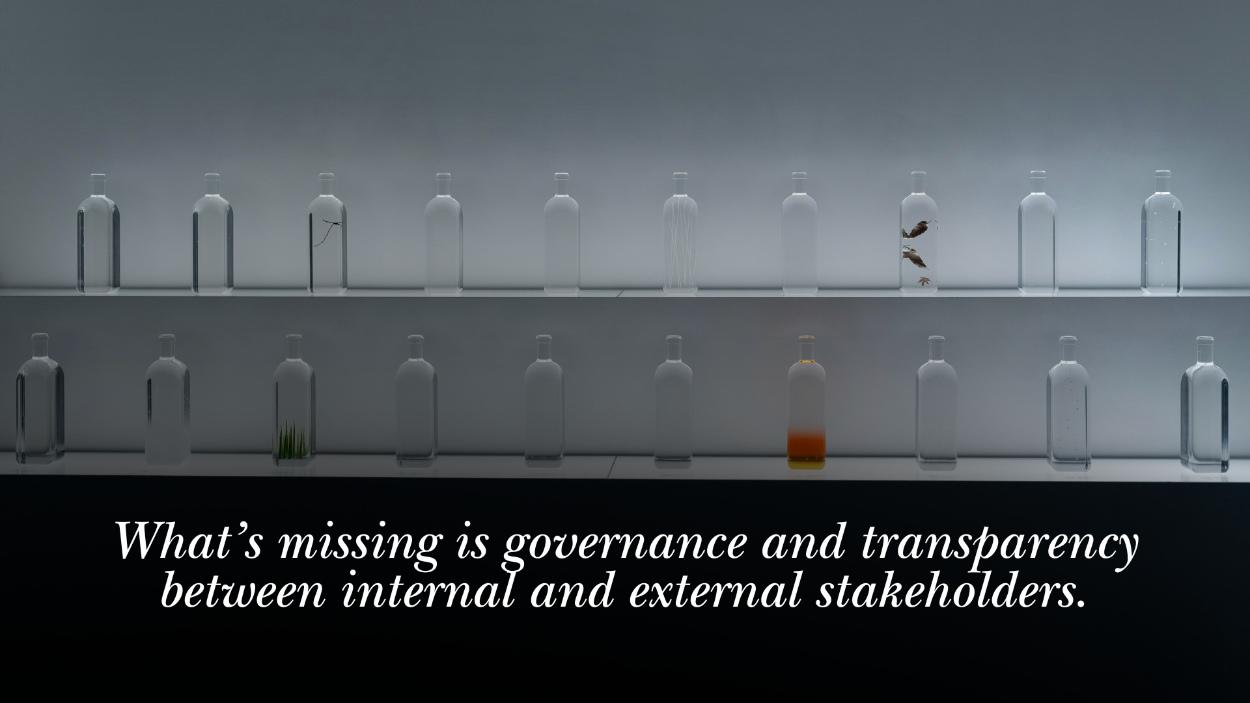
A “Made in USA” label still sells, and tariff policy ensures that incentive will remain. Yet each new case pushes traceability tools further toward the operational centre. The same ledger architecture used for tracking recycled polyester could, with modest adaptation, record where a conditioner bottle was molded. Proof, once peripheral, is becoming infrastructure.
Storytelling remains important in brand building for beauty, but factual consistency now determines credibility. A company unable to substantiate its statements risks both regulatory action and consumer distrust.
Regulations will continue to evolve at different speeds across regions. What matters is that the technical capacity to verify claims already exists, and using it has become a practical necessity rather than an optional exercise.
